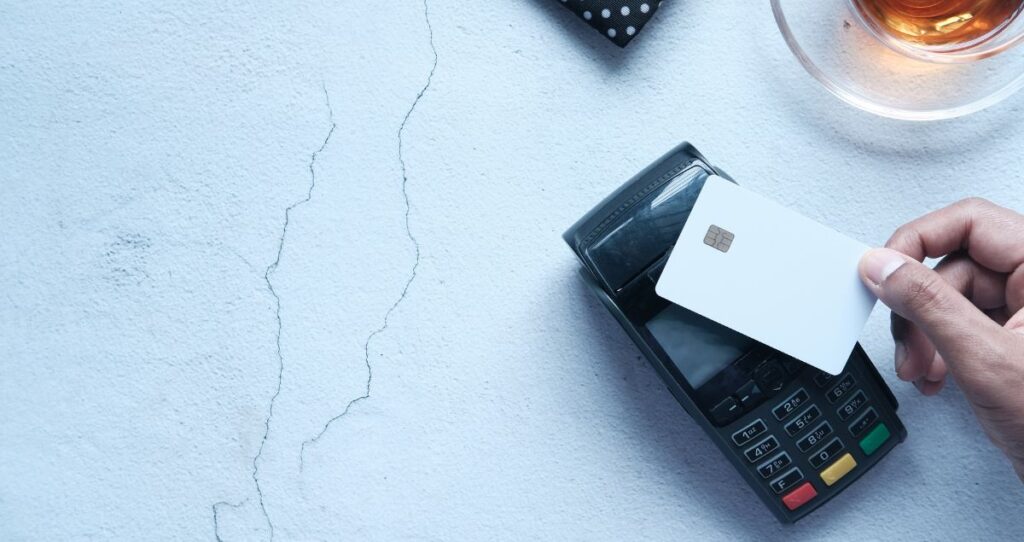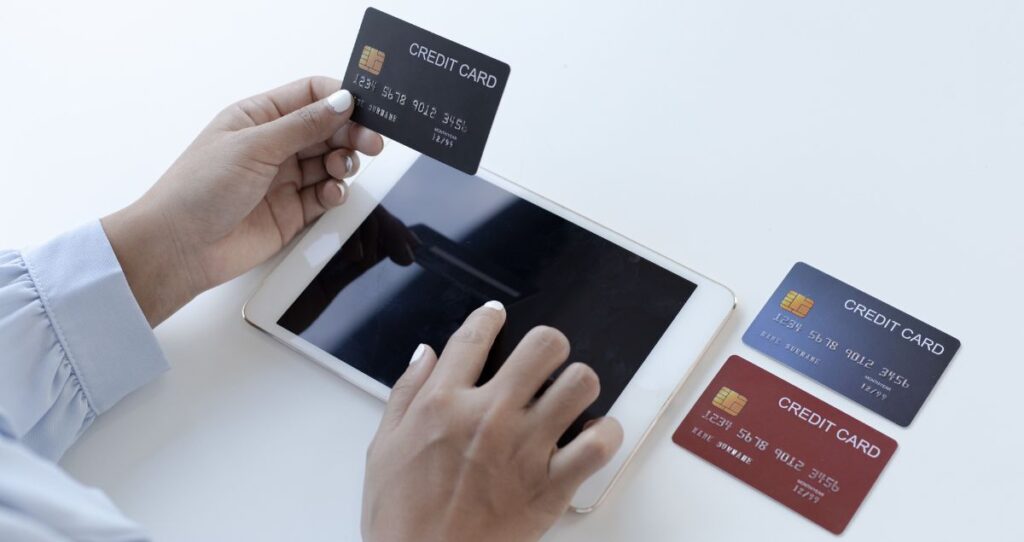Your credit utilization rate is the ratio of the total amount you have spent on your credit cards to the total credit limits on your credit cards. Each credit card you have comes with its credit limit. The credit limit is the maximum credit extended to you by the lender on each credit card. In order words, the credit limit is the total amount you are allowed spend on your credit card. Once you have spent all available credit, you must pay some of your balances before you can use your credit card again.
Key takeaways
- The credit utilization rate is the ratio of the total balance on your credit cards to the total credit limit on your credit cards.
- A higher credit utilization shows that you rely on debt to finance your expenses and lifestyle
- Your credit utilization accounts for 30% of your FICO score calculation and 20% of your VantageScore calculation
- In order to protect your credit score, keep your credit utilization ratio under 30%. The lower the ratio, the better.
- You can lower your credit utilization ratio by paying balances on your credit cards or by getting a new credit card with a higher credit limit.
Lenders watch your credit utilization closely. Although none will stop you from spending the available credit on your credit cards, how much you spend directly affect your credit score. Using too much of your credit limit(having a higher rate) shows that you are relying on debt to cover your expenses.
In other words, you either have no adequate income to cover your expenses or you are financially irresponsible. Either way, you are a risky borrower.
What is the credit utilization rate and how does it work?
If you have any form of revolving credit such as credit cards, you already know what credit utilization means. Even if you don’t know, however, the utilization rate is not difficult to understand. Your credit cards come with credit limits. A credit limit is a total amount you can spend on each credit card.
When it comes to the utilization rate, we are interested in how much you have spent compared to the available credit. If you have only one credit card, your utilization rate will be the ratio of the available credit limit with the credit limit on that credit card. For example, if your credit limit is $500 and you spent $50, your credit utilization ratio will be 10%(50/500×100).
Example of how to calculate the utilization rate
Your credit utilization rate is the total amount you owe credit card issuers on all your credit cards divided by the total credit card limit. For example, let’s assume that you have three credit cards with the following credit limits and corresponding balances.
- Credit card 1. The credit limit is $2,000 and you spent $1,000.
- Credit card 2. The credit limit is $500 and you spent $300.
- Finally, credit card 3. The credit limit is $1,500 and you spent $1,000.
From the above example, your total credit limit is the sum of all available credit limits on each credit card. So, the total credit limit is: $2,000 + $500 + $1,500 = $4,000. The amount you spent is the sum of the balance on your credit card.
The total amount you spent is: $1,000 + $300 + $1,000 = $2,300.
To calculate your credit utilization rate, you will need to divide the total credit limit by the total credit balance on all cards. By continuing our example, we will have the following calculation.
Credit utilization rate = $2,300/$4,000 = 0.575 or 57.5%.
How to interpret your utilization rate?
The credit utilization rate can be interpreted as a percentage or a decimal rate. If you choose to interpret it as a decimal rate, the range will be from 0.0 to 1.0. That is the lowest utilization rate you can have is 0 and the highest utilization will be 1.
A 0 utilization rate means that you have not used any of your credit limits or you have a $0 balance on your credit cards. A 1.0 utilization rate means that you have spent all of the available credit limits on your credit cards.
You can also interpret your credit utilization rate as a percentage by multiplying the rate you have by 100. The range, in this case, will be from 0% to 100% where 0% shows that you don’t have a balance on your credit cards whereas a 100% utilization rate means that you have spent all available credit limits on your credit cards.
What does your utilization rate mean when it comes to borrowing?
A higher utilization rate shows that you are relying on debt to cover your expenses. This could be due to two things.
- Your income is not enough to cover all your expenses. This means that you probably have a lot of debts or you spend extravagantly.
- You are not financially literate. You just spend without understanding the impact of your actions on the health of your credit and credit score.
Whether you belong in the first category or the second category of debtors, lenders will not like you. The point here is that you don’t have the financial means to sustain your lifestyle. Having a higher utilization rate also means that you carry most of your balances on your credit cards. This leads to debt accumulation and financial struggle down the road if you are not struggling financially already. For this reason, you are a risky borrower.
The credit utilization rate affects 30% of your FICO score calculation and 20% of your VantageScore calculations. That is why you should always keep your utilization rate as low as possible especially if you are rebuilding your credit.
What is a good credit utilization rate?
It would be better if you don’t carry balances on your credit cards and other revolving accounts you have. This would prevent you from paying interest, fees, and charges. Furthermore, you will not get into credit card debts if you paid off all your balances on time. Finally, having no credit utilization or keeping it low helps you build your credit fast.
Unfortunately, this is not the case for everyone. We have different financial situations and life goals. So, if you up carrying balances on your credit card accounts, what is considered to be good credit utilization?
Lenders prefer borrowers who have no more than a 30% of utilization rate. This means that at any point in time, you should not spend more than 30% of the total available credit limit on your credit cards. For example, if your credit limit is $1,000, you should not spend more than $300. This will keep your rate low and prevent you from destroying your credit and credit score. This does not mean you cannot spend more than 30% of the available credit limit. As long as you spend it and pay it off before the due date of each month, you will be fine.
Having 30% credit utilization, however, is not a good financial move. What is considered to be your utilization rate on your credit reports is the amount you carried over to the next payment period. Carried balances on your credit cards force you to pay interest in the form of an annual percentage rate (APR). In addition, 30% could be a lot of credit card debt depending on the size of your total credit limit.
That is why it is utterly important to carry no balances on your credit cards at any time. If you can’t pay off all your balances, at least keep your utilization rate to under 10%. The lower the utilization rate, the better.
How credit utilization rate affects my credit score?
The credit utilization rate is one of the highest factors that affect your credit score. Credit reporting agencies put more weight on these factors because they help creditors understand where a person stands financially. Both FICO score and VantageScore models use different weights on your credit utilization.
Credit utilization affects 30% of your FICO score calculation and it is the second factor that affects your score. For the VantageScore, your rate accounts for 20% of your score calculation.
As your utilization rate goes higher, your score goes lower. A higher utilization rate will also hurt the health of your credit. By default, it is never a good idea to carry balances on your credit accounts. Carrying balances lead to the accumulation of consumer debts due to higher interest rates.
How to reduce your credit utilization rate?
There are many ways you can use to lower your credit utilization rate. The following are some of the tips you can use to lower your rate.
- Pay off outstanding balances. Your only accounts for outstanding balances on your credit card accounts. So, by paying off these balances, you automatically lower your balances and the rate at the same time.
- Get a new credit card with a higher credit limit. Although it is not a good idea to borrow more money when you are having trouble with existing debts; you can lower your credit utilization by getting another credit card. The new card will come with its own credit limit. The new credit limit will increase your overall credit limit and lower your utilization at the same time.
The bottom line
Your credit utilization rate is the ratio of total balances on your credit card accounts to the total credit limit. Having a higher utilization rate shows that you are relying on debt to finance your expenses. Higher credit utilization also leads to the accumulation of credit card debts due to higher APRs. It is a good idea to have a credit utilization that is lower than 30% to keep your credit history healthy and protect your credit scores.









